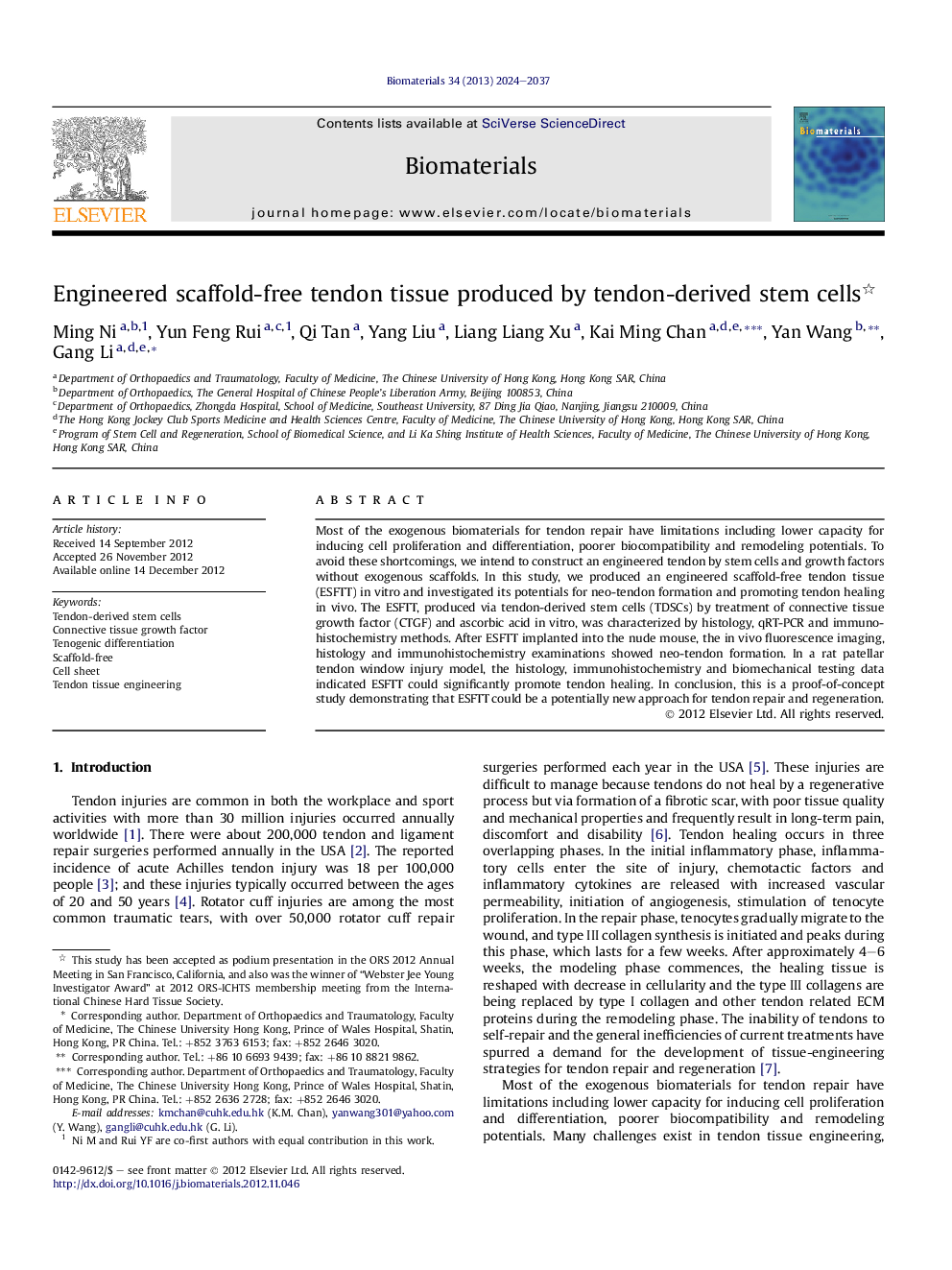| Article ID | Journal | Published Year | Pages | File Type |
|---|---|---|---|---|
| 10228640 | Biomaterials | 2013 | 14 Pages |
Abstract
Most of the exogenous biomaterials for tendon repair have limitations including lower capacity for inducing cell proliferation and differentiation, poorer biocompatibility and remodeling potentials. To avoid these shortcomings, we intend to construct an engineered tendon by stem cells and growth factors without exogenous scaffolds. In this study, we produced an engineered scaffold-free tendon tissue (ESFTT) in vitro and investigated its potentials for neo-tendon formation and promoting tendon healing in vivo. The ESFTT, produced via tendon-derived stem cells (TDSCs) by treatment of connective tissue growth factor (CTGF) and ascorbic acid in vitro, was characterized by histology, qRT-PCR and immunohistochemistry methods. After ESFTT implanted into the nude mouse, the in vivo fluorescence imaging, histology and immunohistochemistry examinations showed neo-tendon formation. In a rat patellar tendon window injury model, the histology, immunohistochemistry and biomechanical testing data indicated ESFTT could significantly promote tendon healing. In conclusion, this is a proof-of-concept study demonstrating that ESFTT could be a potentially new approach for tendon repair and regeneration.
Keywords
Related Topics
Physical Sciences and Engineering
Chemical Engineering
Bioengineering
Authors
Ming Ni, Yun Feng Rui, Qi Tan, Yang Liu, Liang Liang Xu, Kai Ming Chan, Yan Wang, Gang Li,
